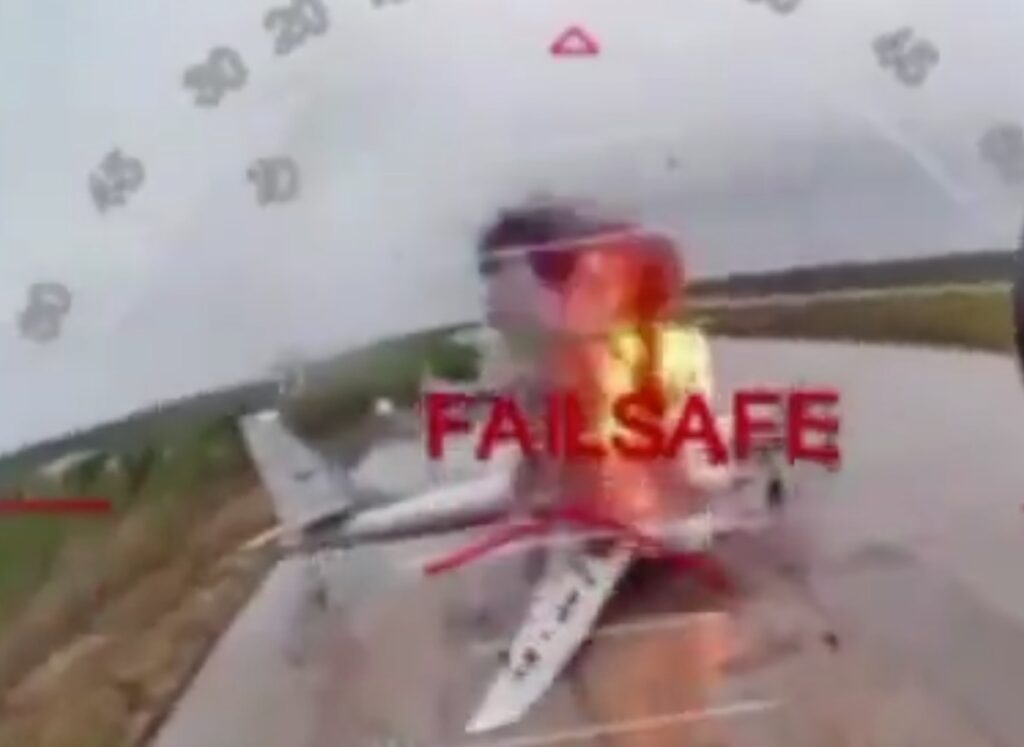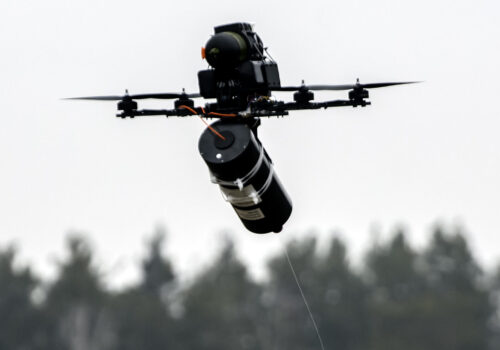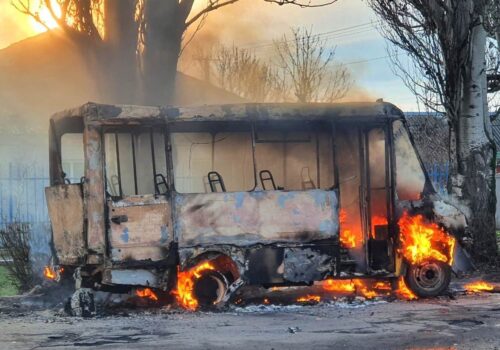Ukraine carried out one of the most audacious operations in modern military history on June 1, using swarms of smuggled drones to strike four Russian airbases simultaneously and destroy a significant portion of Putin’s bomber fleet. While the full extent of the damage remains disputed, open source evidence has already confirmed that Russia lost at least ten strategic bombers and possibly many more.
The attack highlighted Ukraine’s innovative use of military technologies and confirmed the country’s status as a world leader in the rapidly evolving art of drone warfare. Crucially, it also underlined Kyiv’s ability to conduct complex offensive operations deep inside Russia. This will force the Kremlin to radically rethink its domestic security stance, which could lead to the diversion of resources away from the invasion of Ukraine.
Stay updated
As the world watches the Russian invasion of Ukraine unfold, UkraineAlert delivers the best Atlantic Council expert insight and analysis on Ukraine twice a week directly to your inbox.
According to Ukrainian sources, preparations for Operation Spider’s Web had been underway since late 2023. Ukraine was able to move a series of modified cargo containers into Russia along with more than one hundred first-person view (FPV) drones. The containers were then loaded with the drones and mounted on lorries before being moved into position close to Russian airbases. On Sunday morning, the green light was given and the drones were remotely activated, emerging from their containers to strike nearby Russian bombers.
The bombers targeted in these drone attacks play a key role in Russia’s air war and are regularly used to launch cruise missiles at Ukrainian cities. While Ukraine’s June 1 success will not bring this bombing campaign to an end, it may help save Ukrainian lives by reducing the number of available planes and forcing Russia to disperse its remaining strategic bombers to locations further away from Ukraine.
While any reduction on Russia’s ability to bomb Ukrainian civilians is welcome, the impact of Ukraine’s airbase attacks on the future course of the war is likely to be far more profound. Sunday’s Ukrainian strikes at locations across Russia have transformed the situation on Putin’s home front. Since the onset of Russia’s full-scale invasion more than three years ago, Russians have grown accustomed to viewing the war as something that is taking place far away. That sense of security has now been shattered.
Eurasia Center events

This was not the first time Ukraine has struck deep inside Russia. For much of the war, Ukraine has been using its growing fleet of long-range drones to target Russian military bases and the country’s oil and gas industry. Russian Air Force hubs such as the Engels airbase in Saratov Oblast have been hit multiple times.
Ukraine’s attacks have gained momentum as the country’s long-range drone fleet has evolved and as Kyiv has developed its own missile capabilities. This mounting proficiency has not gone unnoticed internationally. Indeed, China reportedly asked Ukraine to refrain from attacking Moscow during the recent Victory Day parade on May 9, as Beijing was apparently unsure whether the Russians themselves could provide sufficient protection for the visiting Chinese leader.
Sunday’s operation represents a new stage in Ukraine’s efforts to bring Putin’s invasion home to Russia. By deploying large numbers of drones surreptitiously across the Russian Federation and activating them remotely, Ukraine demonstrated an ability to strike anywhere without warning. The consequences of this are potentially far-reaching. Russia must now increase security at every single military base, military-industrial site, command center, and transport hub throughout the country.
In addition to ramping up defensive measures around military infrastructure, Russia must also introduce further checks at the country’s borders and closely monitor all activity along endless highways stretching from Europe’s eastern frontier to the Pacific Ocean. This is a logistical nightmare. For example, thanks to Ukraine’s attack, all cargo containers must now be treated with suspicion. There are already reports of bottlenecks emerging at locations across Russia as alarmed officials inspect lorries in the hunt for more Ukrainian drones.
Given the colossal size of the Russian Federation, addressing the threat posed by Ukraine’s Trojan Horse tactics is a truly Herculean task. Russia’s vastness has traditionally been viewed as one of the country’s greatest strengths. The new form of warfare being pioneered by Ukraine could now turn this size into a major weakness. US President Donald Trump has repeatedly stated that Ukraine does not “have any cards” in its war with Russia, but Ukrainian President Volodymyr Zelenskyy may just have played the ace of drones.
David Kirichenko is an associate research fellow at the Henry Jackson Society.
Further reading
The views expressed in UkraineAlert are solely those of the authors and do not necessarily reflect the views of the Atlantic Council, its staff, or its supporters.

The Eurasia Center’s mission is to enhance transatlantic cooperation in promoting stability, democratic values, and prosperity in Eurasia, from Eastern Europe and Turkey in the West to the Caucasus, Russia, and Central Asia in the East.
Follow us on social media
and support our work
Image: EYEPRESS via Reuters Connect





